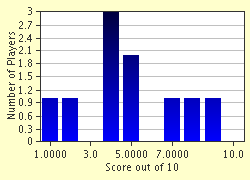Quiz Answer Key and Fun Facts
1. Which Spanish explorer, who also served as Chile's first governor, founded Santiago on February 12, 1541 on the Mapocho River?
2. What was unique about Ines Suarez, a conquistador who successfully defended Santiago from an uprising by the natives led by Michimalonco in September 1541?
3. What unusual occurrence happened during the 1647 Santiago earthquake that destroyed the city?
4. After the 1647 earthquake many other natural disasters and diseases swept through the city, and all of Chile's power was centralized around which location in Santiago?
5. Which Argentine general invaded and occupied Santiago in 1817 during the South American Wars for Independence? He is considered to be the person who liberated Chile from Spanish rule.
6. Which of the following was NOT a policy instituted during the Patria Nueva period of Bernardo O'Higgins?
7. December 8, 1863 saw the largest fire in Santiago history. It may even have been the deadliest building fire in the history of the world. In which building did this fire occur that left between 2,000 and 3,000 people dead?
8. By the late 1890s and early 1900s, Santiago saw a population boom attributed to an industrial revolution. Prior to then, which other city was commonly said to be Chile's economic capital?
9. Santiago was the scene of the 1973 Chilean coup d'etat that saw ousting and suicide of which Marxist president?
10. Which of the following is NOT a problem that plagued Santiago at the beginning of the 21st century?
Source: Author
Joepetz
This quiz was reviewed by FunTrivia editor
bloomsby before going online.
Any errors found in FunTrivia content are routinely corrected through our feedback system.

